Robert Tombs and Lawrence Goldman write: The Church Commissioners have pledged £100 million over nine years in reparation for what are claimed to be their eighteenth-century predecessors’ involvement in and large financial gains from slavery and the slave trade.1 They argue that the Church, through Queen Anne’s Bounty (a corporation created by statute in 1703-4 for ‘the Augmentation of the Maintenance of Poor Clergy’), consciously invested ‘heavily’ in the slave-trading activities of the South Sea Company, allowing the Bounty to benefit directly from the profits of enslaving Africans and, furthermore, that it received tainted benefactions from individuals whose wealth might well have been earned through some connection with slavery.
After research in its archives by a firm of accountants, which formed the substance of their Report (entitled Church Commissioners’ Research into Historic Links to Transatlantic Chattel Slavery, 2023), the Commissioners announced the intention of creating a £100m ‘impact investment fund’; and they have further welcomed a report by ‘a Black-led oversight group’ appointed ‘to propose objectives and structure for the fund’ which has proposed increasing this sum by ‘target[ing] assets of over £1 billion’.2
Their language has oscillated between the unambiguous use of the word ‘reparation’ and the vaguer expression ‘healing, repair, and justice’—a distinction without real difference, as can be seen in the sum being offered, its supposed derivation (‘a historic pool of capital tainted by its involvement in African chattel enslavement: Queen Anne’s Bounty’) and the extraordinarily unspecific and unmeasurable aims of the project (to ‘generate returns that would replenish and enable funding to be deployed to relevant causes in the African diaspora, ideally in perpetuity’). The disbursement seems to be practically unconditional, and principally aimed at the Black middle class: ‘Black-led businesses …Black fund managers … brilliant social entrepreneurs, educators, healthcare givers, asset managers and historians’, as the Oversight Group of the Church Commission lists them.3
By the Commissioners’ report’s own admission, there are flaws and shortcomings with the research on which their decision is based. These include the lack of ‘peer review to academic discipline standards’, and the incomplete and unreliable nature of the data sources, especially the benefactor registers.4 The forensic accountancy is subject to explicit caveats about its assumptions (conceding, for example, that ‘it is very likely that some … are incorrect’) and the possibility of error. The report’s interpretation of the sources seems based on the idea that money would be morally tainted by any degree of association with slavery and the slave trade, carrying that moral stain through the generations to the present day even when the original funds and assets are long gone. It is unclear whether this criterion is applied to any other source of Church funding.
The report seems more concerned with present day political advocacy than with objectively assessing the Church’s history or present day needs. The report states: ‘we can and will recognise and acknowledge the horror and shame of the Church’s role in historic transatlantic chattel slavery and, through our response, seek to begin to address the injustices caused as a result.’5 There is no indication as to how the beneficiaries of the proposed fund are assessed to be suffering from injustices caused by slavery.
Part 1: Investing in the South Sea Company
Queen Anne’s Bounty was created to receive the produce of two taxes and other church income and use it to improve the conditions of the poorest clergy. It chose to do so by buying land that would be attached to the poorest livings. Until suitable parcels of land could be purchased, it invested the funds it received. It needed safe and liquid instruments, and from 1712 onward it held a growing portfolio of government securities.
The South Sea Company was created by statute in 1711 to take over existing government obligations such as unpaid bills and wages, and other debt instruments such as those held by Queen Anne’s Bounty. It was to absorb short-term unfunded government debt by converting it into company shares that could be traded on the stock market. In return, the government paid interest to the South Sea Company which then went to investors. The shareholders’ returns consisted of this government annuity and, possibly, profits from the trading privilege given to the company. The nature of the privilege only became clear a few years later after peace with Spain was signed. It consisted of the asiento: a maximum number of slaves that the Company could import into Spanish colonies, and an annual ship laden with goods also destined for those colonies. In practice these trading activities were interrupted by frequent wars with Spain and ceased altogether in 1740. The Company also transported slaves to British islands in the Caribbean. From 1740 to 1853 the Company formally continued to exist, but was merely a conduit to pay out the government annuity.
From the time of its foundation the South Sea Company’s ability to absorb debt rather than turn a profit from South American trade—which astute investors doubted—defined its performance in the stock market.6 After passage of the South Sea Act of 1711 (which, interestingly, makes no reference to the slave trade) the new company converted some £9 million of short-term government debt into South Sea shares. There followed further successful conversion of £1.5 million of longer-term debt in 1719. This was the prelude to the grandiose scheme launched in 1720 for converting the remaining publicly held long-term debt. At the time of this 1720 conversion Britain was at war with Spain, and the Company, ‘with its trade at full stop for all to see became from necessity a naked finance corporation.’7 These financial operations underline historian Larry Neal’s verdict that ‘From its beginning, the South Sea Company was primarily an organization for the conversion of government debt.’8
The Bounty’s previous holdings of short-term government securities were eligible for conversion into South Sea shares in 1720, and it converted part, but not all, of its holdings, as did nearly all government creditors. The intention was to obtain an investment that offered predictable long term returns yet was also readily saleable when funds were needed. This transaction by the Bounty and the other investors was not a purchase at market price, but a debt conversion on terms only announced later by the South Sea Company. These terms turned out to be very unfavourable, and the Bounty was left with a serious loss. This was the only acquisition of South Sea shares it ever made. It is this acquisition, made at a time when slave trading was not taking place, which forms the Bounty’s only connection with enslavement.
The trading activities of the Company were to be a very small part of its overall financial operations, and were most unlikely to have been the motive for the Bounty to acquire shares, most obviously because trade with Spain was at that time suspended because of war, with no clarity about if or when it might resume.
By 1723, the vast bulk of the government’s debt was to the Company, very little being held directly by the public. Many of the new shareholders did not want to participate in the Company’s trading activities. Accordingly in 1723, parliament legislated to split the existing shares into two types of security: each share of £100 became a ‘share’ (so-called trading stock) of £50 and an ‘annuity’ of £50. Both were entitled to a half of the interest paid by the government, but only the shares receiving any profit from trading, which include trading in slaves.9 The Bounty’s holdings were consequently split into annuities and shares. The earnings from its remaining shares represent a very small part of its overall income. These shares were mostly sold in 1728 (a small remaining portion was redeemed by Parliament in 1730).
The Bounty would only purchase annuities in the years after 1723—as soon as they became available. From 1728 to 1778 South Sea Annuities were the Bounty’s only investment vehicle: unsurprisingly, since (at least in the early years) there was almost no other form of government security in which to invest.
The claim that the Bounty had invested ‘heavily’ in the slave trade through the South Sea Company has repeatedly been questioned by Professor Richard Dale, an expert in financial history and the South Sea Company. He shows that by choosing to invest in South Sea Annuities, not Company shares, the Bounty was purchasing government bonds in all but name.10 From 1723 onward, South Sea Annuities are simply government debt whose semi-annual coupons happened to be paid out at South Sea House. As Dr François Velde puts it:
for all practical purposes, the annuities, both old (created in 1723) and new (created in 1733), were government debt … managed (that is interest paid and transfers registered) by the South Sea Company.11
Income derived from the South Sea Annuities came directly from the government and had no connection with trade of any kind.
The 1723 legislation provides certainty that the Queen Anne’s Bounty was aware that they were not investing in the slave trade. Professor Dale states that by investing in annuities ‘they could be absolutely sure that they were not investing in slaving activities.’12 He has concluded unambiguously that
If the Bounty managers had wished to benefit from the slaving business, they would have invested in the Company’s shares; but, with one minor exception in 1720—when the slave trade was shut down owing to war with Spain—they chose to avoid the risks and rewards of the commercial business and invested, instead, in what were essentially government-backed debt instruments.13
The South Sea Company’s slave trading activities were intermittent and volatile due to regular bouts of conflict and disagreement with Spain. In theory the Asiento contract was a 30-year monopoly on slave trading with Spain’s colonies in South America from 1713 to 1743. But recurring conflict with Spain caused these operations to stop for extended periods. The War of the Quadruple Alliance in 1718 to 1720, the Anglo-Spanish War of 1727 to 1729, and, finally, the War of Jenkins’ Ear in 1739 caused operations to stop entirely. The company’s commercial losses were eventually compensated by Spain at £100,000 in 1750.14
To sum up, the involvement of Queen Anne’s Bounty managers in the South Sea Company’s trading activities was limited: they held on briefly to the shares acquired in 1720 after peace with Spain was signed in June 1721 and trade resumed. Half of these shares still remained after the 1723 division, and nearly all those remaining were sold in 1728. Ownership of these shares was the sole link of the Bounty with slave trading from 1721 to 1727, when 19,034 Africans were embarked and 15,903 disembarked by the South Sea Company either in British or Spanish colonies.15 The Bounty managers seem to have acquiesced in this traffic. Nevertheless, the Bounty’s involvement was remarkably limited at a time when religious bodies of many kinds, non-Christian and Christian, gave slavery moral sanction and even involved themselves directly in slave owning. So far, the clearest explanation of why the Church of England today – perhaps alone among major religious bodies – is proposing to pay large financial reparations appears to be not that they were deeply involved in slavery over its long and inhuman history, but that they believe that a major part of their corporate wealth was originally earned from slave trading—’a historic pool of capital tainted by its involvement in African chattel enslavement’.
However, while the connection of the Bounty with the slave trade was reprehensible and a proper cause of regret, it was certainly not the source of ‘a historic pool of capital’. The South Sea Company never made any profit from slave trading, and the Bounty did not derive any income from slave trading during the brief period when it held shares in the Company. On the contrary, its 1720 investment in shares made a disastrous loss, equal to 14 percent of its total portfolio.16
There was and is therefore no ‘historic pool of capital’ derived from slave trading from which reparations today could reasonably be paid.
Though the Commission argues that no parish funds would be used in these reparation payments, this would appear to overlook the fact that the present Commission funds include former parish and diocesan funds administered until 1948 by the Ecclesiastical Commissioners. The Commissioners’ proposed use of many millions in ways for which that money was never intended means that it will not be available for the important and foundational purpose of supporting hard-pressed parishes.
Evidently, if there were today an identifiable ‘pool of capital’ illegitimately gained from the slave trade, and vastly increased by investments and economic growth over the last 300 years, it would strengthen the case for reparations to be paid from it. But as no income came from the slave trade, the case for financial reparations must logically be weaker. Moreover, even if the planned £100 million investment fund were justified by the Bounty’s brief link with the iniquitous asiento, the fund ought surely to be directed in large part to Spanish America. Otherwise, the £100 million becomes a normal investment or a normal charitable donation, which ought to be assessed using established criteria, of which need rather than heredity must surely be paramount.
The Commissioners’ report reflects some of these contradictions and weaknesses. On page 18 it clearly explains that the South Sea Annuities derived their income from government payments; and on page 39 it further confirms that after 1723 the Bounty ‘invested almost exclusively in South Sea Company Annuities for the next 50 years’ and that they were ‘by far and away’ its most important investment. But this crucial explanation does not connect with the conclusions of the report.
One cannot but wonder whether the Commissioners only realized at a late stage that investment in South Sea Annuities had no connection whatever with slave trading, but persisted in allowing the opposite conclusion to be suggested in their report.
It is noteworthy that the only explicit statement in any document issued by the Commissioners that the Bounty knowingly invested in slave trading is in the section of the report contributed by Dr Helen Paul. It is there stated (page 18) that ‘Anyone investing in the company before 1740, whether they made money on their investment or not, was consciously investing in these [slave-trading] voyages.’ As has been seen, this is simply not the case, as after 1723 annuities were wholly separated from shares in the trading company by Act of Parliament.
Nowhere else do the Commissioners’ several pronouncements make the explicit claim that the Bounty invested in slaving. But (to put it mildly) they do nothing to discourage the reader from drawing the inference that there was significant long-term investment by the Bounty in slave trading, though without quite saying so. Indeed, both the Executive Summary and the body of the report repeatedly imply that income from annuities was linked from slave trading activities:
By the time the South Sea Company ceased its activities trading in enslaved people in 1739, the Bounty had accumulated £191,762 of South Sea Company Annuities … [I]t has been calculated that these had a theoretical value of £204,278 (potentially equivalent to c. £443 million in today’s terms).17
[A] significant portion of the Bounty’s income during the 18th century was derived from sources that may be linked to transatlantic chattel slavery, principally interest and dividends on South Sea Company Annuities and benefactions from wealthy individuals.18
The paper to General Synod also took this approach, and one might reasonably assume that the trustees saw something similar when they agreed this unusual use of the Commissioners’ charitable funds in making controversial, arguably politicised, investment decisions and grants and dispensing money for conceivably partisan research, education, and publicity without consideration of financial return.
Part 2: Benefactions
The Commissioners’ report estimates that some 14 percent of the Bounty’s income in the 18th century came from benefactions. While the conclusions regarding investments in the South Sea Company are based on faulty historical understanding, the analysis of benefactions rests on assumptions about flawed data. It is argued in the Commissioners’ report that slavery and the slave trade were so fundamental to prosperity in eighteenth-century Britain that a large proportion of the gifts made to the Church must have been rooted to some extent in slavery. Benefactions, according to the report, were received from individuals who might have profited personally from slavery and the slave trade, including the 1833 compensation to slaveholders. The report suggested that as much as 30 percent of the benefactions to the Bounty from 1713 to 1850 came from individuals having a ‘high’ or ‘very high’ likelihood of possibly being linked with the slave trade.19 This amounts to £359,242 of benefactions, judged to be equal to £482 million today.20
However, the analysis of the Benefaction Registers is far more speculative than the work done on the Queen Anne’s Bounty’s investments due to poor record keeping, unclear information, illegible writing, and missing entries. These figures have not been adjusted for inflation over time and ‘are not definitive’ by the report’s own admission.21 The report states, for example
it is possible that the monies provided by Alexander Colston were his own and were not derived from the transatlantic trade in enslaved people
a caveat which must surely apply to most benefactors.22 A range of assumptions was used to assess whether a particular benefactor was connected with ‘or may have had links’ (in some unspecific way) to slavery. These assumptions include ‘being active’ at the time of the South Sea Bubble; involvement in politics (including being a peer); being ‘linked’ to a city involved in the slave trade; being ‘linked’ to industries such as cotton, copper, or iron; and having naval connections. No empirical basis, statistical or otherwise, is provided for these assumptions. It is easy to see why the forensic accountants were so circumspect and explicitly accepted the scope for error. Regarding the 1833 compensation, the report also states that ‘it is not possible to conclude that benefactions to the Bounty were funded directly by compensation payments received by those who owned enslaved people’.23
Asset tracing could not find connection between such benefactions and any property held by the Church today. While the report does not exclude the possibility of properties being held by another Church body, it is significant that it has been many years since the Church last enjoyed any direct financial benefit from these transactions.24 The figures produced by the report regarding the possible percentage of the benefactions given by people with links with slavery and the slave trade are therefore highly speculative. There were certainly benefactors who made a profit from slavery and the slave trade, but the amount donated to the Church, and it source, cannot be determined with any degree of accuracy.
Part 3: Slavery’s role in British prosperity
As a general justification for their reparations policy, the Commissioners seem to have accepted a resurgent but highly contestable view that slavery and the slave trade were crucial to British prosperity during the eighteenth-century and laid the foundations for industrialization and the spread of capitalism. Eric Williams argued in his 1944 work Capitalism and Slavery that the wealth generated by slavery was the key to funding the take-off of the industrial revolution. He further alleged that slavery ended not because of a moral crusade but because it became unprofitable, and goods became easier to manufacture at home than abroad. A succession of authoritative historians have discredited the Williams Thesis over many years.25
As a result of recent events, such as ‘Black Lives Matter’, the Williams Thesis has however been resuscitated. A few reputable historians such as Maxine Berg and Pat Hudson have emphasised—their critics say exaggerated—the impact of slavery on the British economy. In a recent book, they have followed the trend of linking the past with present day protest movements inspired by Black Lives Matter:
Protest and debate over the commemoration and activities of slave traders and plantation owners operating centuries ago highlight major questions about the origins of Britain’s wealth as well as the foundations of deep-seated racial disparities and racial justice in Britain and elsewhere.26
It is therefore necessary to summarize the issue of the degree of importance of slavery and the slave trade to the British economy, and therefore whether they must have generated a large part of the wealth received by the Church from private benefactors.
Slavery and empire were undoubtedly central to the British relationship with the West Indies and West Africa in the eighteenth century—as they were for several other countries, most importantly France, Portugal and Spain—but did not determine the spread of global trade or industrialisation. The Williams Thesis minimised the complex range of factors that played significant parts in industrialising Britain, and it has been contradicted by substantial scholarship carried out since the 1940s. Enlightenment thought and scientific discovery27, pre-existing economic development28, cheap mineral fuel29, and industrial innovation are dismissed or simply ignored by ‘decolonialist’ followers of the Williams Thesis, who attribute the rise of the West to slavery and the slave trade.30 Their conclusion is that Western prosperity was built on an immoral basis and therefore does not have legitimacy today. The ‘New History of Capitalism’ hypothesis takes this to the global level, arguing that slavery is responsible for the so-called ‘Great Divergence’ between the global north and south.31 Their claim that slavery and colonialism (rolled into one phenomenon) have caused profound contemporary societal harm, ‘toxifying whole societies and nations … throughout the Atlantic hemisphere’, such that ‘total repair will not be possible for centuries’, is a theme of the Oversight Group’s report32.
The first question is whether slavery was indeed the foundation of British and global economic modernization. The industrial revolution was the product of many different developments interacting with each other in eighteenth-century Britain, of which slavery and the slave trade were significant but not transformative. Indeed, Berg and Hudson explicitly stop short of embracing the Williams Thesis:
We do not argue that slavery caused the industrial revolution. Neither do we suggest that slavery was necessary for the development of industrial capitalism in Britain. Even less does our study attempt to estimate that the gains from slavery contributed a particular percentage to Britain’s economic growth, GDP or capital formation in the eighteenth century.33
David Eltis and Stanley L. Engerman show that the slave trade engaged 1.5 percent of British vessels and 3 percent of tonnage34. Other major slave trading and slave-owning states did not experience British-style industrialisation, including Spain and Portugal35, the Ottoman Empire and France (which had the biggest slave-based colonial economy). This evidently weakens the supposed link between economic modernization and slavery. Despite efforts to promote industrial development, France lagged far behind Britain. Slavery did have a strong role in the cotton industry and some other forms of economic activity, but these were not dominant in the British economy. Sugar and cotton sat alongside woollen textiles, coal, and iron ore. In relative and comparative terms, slavery was only one part of trade and economic activity. Engerman estimates that profits from slavery were ‘below 5 per cent of British [national] income’36.
The major industrialists were not slaveholders. Industry was driven by local businessmen and local capital, largely from the provinces and dissenting backgrounds. T.S. Ashton specifically linked this to dissenting sects such as Unitarians, Congregationalists, Presbyterians, Quakers, and Baptists.37Many of these supported the anti-slavery movement and boycotted slave-produced sugar. However, slavery was more closely linked to the so-called ‘gentlemanly capitalism’ of land, banks, and merchants as Peter Cain and Tony Hopkins argued in the 1980s and 1990s, meaning there is certainly a reasonable likelihood that there were benefactions given to the Church from people associated with the slave trade and slave production38. The problem, as noted earlier, is that the amount cannot be accurately estimated.
The second question is whether Britain today is indeed ‘toxified’ by the legacy of slavery. The American obsession with slavery and race, understandable because of its long history of segregation, has very little comparable with the British experience, and ‘decolonial’ narratives of British history warp our understanding of the past and misrepresent our present society. A central pillar of the reparations argument is that slavery has left a permanent legacy of racism and disadvantage in Britain (‘total repair will not be possible for centuries’) that commands a priority of resources. But this assertion has been disproved by a succession of important studies. A comparative EU study of the experience of ethnic minorities across Europe showed that over a range of crucial areas (including experience of discrimination, violence, relations with the police, employment, wages, social mobility and housing) the UK enjoyed among the very best levels of race relations of all countries.39 The report of the Commission on Race and Ethnic Disparities found that
geography, family influence, socio-economic background, culture and religion have more significant impact on life chances than the existence of racism.40
Other recent studies, for example by King’s College London, have shown very similar results.41
Conclusion
The Church has committed itself to paying a vast sum in reparations based on the belief that it made major investments in the eighteenth century slave trade, and thereby accumulated a ‘historical pool’ of tainted wealth. But with ‘one minor exception’42 it did not invest in anything connected with slave-trading, and the tainted wealth never existed. It must have received benefactions from some individuals linked with slavery, but the amount cannot be even roughly quantified. The legacy of damage claimed to stem from this historic wrong cannot be shown to exist in Britain in 2024. It is hard to understand why resources for which there are so many and varied needs should be diverted to a purpose for which both the historical basis and the present-day justification are equally weak.
Robert Tombs and Lawrence Goldman
The authors thank Professor Richard Dale and Dr François Velde for their expert guidance, Mr David Cowan for his research assistance, and Charles Wide KC, Prof Nigel Biggar, and Dr Alka Sehgal-Cuthbert for their comments and advice.
 Prof Robert Tombs is a British historian of France. He is professor emeritus of French history at the University of Cambridge and a fellow of St John’s College, Cambridge.
Prof Robert Tombs is a British historian of France. He is professor emeritus of French history at the University of Cambridge and a fellow of St John’s College, Cambridge.
 Dr Lawrence Goldman FRHistS is an English historian and academic. He is the former director the Oxford Dictionary of National Biography and of the Institute of Historical Research, University of London.
Dr Lawrence Goldman FRHistS is an English historian and academic. He is the former director the Oxford Dictionary of National Biography and of the Institute of Historical Research, University of London.
Footnotes
- BBC News (2023). ‘Church of England announces £100m fund after slavery links’. 10 January. Available at: https://www.bbc.co.uk/news/uk-64228673
- Oversight Group Recommendations to the Board of Governors: Healing, Repair and Justice https://www.churchofengland.org/sites/default/files/2024-03/church-commissioners-for-england-oversight-group-report-to-the-board-of-governors.pdf
- Oversight Group Recommendations. On 23 November 2023 the Board of Governors met in York and accepted the 41 recommendations of the initial report.
- Church Commissioners for England, ‘Church Commissioners’ Research into Historic Links to Transatlantic Chattel Slavery’ (2023), p.10.
- Ibid, p 6
- Ibid.
- John Carswell, The South Sea Bubble (London, Cresset Press, 1961), p. 64
- Larry Neal, The Rise of Financial Capitalism: International Capital Markets in the Age of Reason (Cambridge University Press, 1991), p.94
- The statutes creating South Sea annuities use slightly different wording but the intent and effect is clear. A new ‘joint stock’ of annuities is established, the capital of the South Sea Company being ‘divided and separated in such a manner that all the [proprietors] may find their respective shares or interests in each part … and shall be deemed and adjudged to be divided and separated accordingly, any former law or statute whatsoever to the contrary notwithstanding’ (Section III of 1723 Act).
- Richard Dale, The First Crash: Lessons from the South Sea Bubble, (Princeton University Press, 2016).
- François R. Velde, ‘Winners and Losers in Britain’s 1722 Debt restructuring’, Federal Reserve Bank of Chicago, (14 December 2022), pp.51-52.
- Dale, The First Crash
- Ibid
- Richard Dale, ‘Slavery did not benefit Bounty’, Church Times, 22 March 2024. https://www.churchtimes.co.uk/articles/2024/22-march/comment/opinion/slavery-did-not-benefit-bounty
- Information provided by François Velde, based on Voyages online database
- Information provided by François Velde
- Church Commissioners for England, ‘Church Commissioners’ Research into Historic Links to Transatlantic Chattel Slavery’ (2023), p 30
- Ibid p. 8
- Ibid p.34.
- Ibid p 36
- Ibid p 36
- Ibid p 35
- Ibid p 35
- Ibid p 27
- Roger T. Anstey, ‘Capitalism and Slavery: A Critique’, The Economic History Review, New Series, Vol.21, No.2 (Aug. 1968), pp.307-320; Hilary Beckles, ‘Capitalism and Slavery: The Debate over Eric Williams’, Social and Economic Studies, Vol.33, No.4 (December 1984), pp.171-189.
- Maxine Berg and Pat Hudson, Slavery, Capitalism and the Industrial Revolution (John Wiley & Sons, 2023), p. 3
- Joel Mokyr, The Enlightened Economy: An Economic History of Britain 1700-1850, (Yale University Press, 2012).
- R.C. Allen, ‘Why the industrial revolution was British: commerce, induced invention, and the scientific revolution’, The Economic History Review, May 2011, Vol.64, No.2, p.358.
- E.A. Wrigley, Energy and the English Industrial Revolution, (Cambridge University Press, 2015), p.4.
- For example Kehinde Andrews, The New Age of Empire: How Racism and Colonialism Still Rule the World, (Penguin Books, 2022); Sathnam Sanghera, Empireland: How Imperialism Has Shaped Modern Britain, (Penguin Books, 2021); Priyamvada Gopal, Insurgent Empire: Anticolonial Resistance and British Dissent (Verso, 2019).
- E.g. Sven Beckert, Empire of Cotton: A Global History, (Penguin Books, 2014).
- Oversight Group Recommendations pp. 4-5
- Lawrence Goldman, ‘Slavery, Capitalism and the Industrial Revolution: A Dissent’, History Reclaimed, 12 September 2023. https://historyreclaimed.co.uk/slavery-capitalism-and-the-industrial-revolution-a-dissent/
- Doug Stokes, ‘Did slavery make Britain rich? – Decolonisation and Progressive Masochism’, History Reclaimed, 7 November 2022. https://historyreclaimed.co.uk/did-slavery-make-britain-rich-decolonisation-and-progressive-masochism/
- Ibid
- Lawrence Goldman, ‘Slavery, Capitalism and the Industrial Revolution: A Dissent’
- T.S. Ashton, The Industrial Revolution 1760-1830, (Oxford University Press, 1997).
- Lawrence Goldman, ‘Slavery, Capitalism and the Industrial Revolution: A Dissent’
- ‘Being Black in the EU – Second European Union Minorities and Discrimination Survey’, 15 November 2019 https://fra.europa.eu/en/publication/2018/being-black-eu
- ‘The report of the Commission on Race and Ethnic Disparities’, 28 April 2021 https://www.gov.uk/government/publications/the-report-of-the-commission-on-race-and-ethnic-disparities
- ‘Love thy neighbour? Public trust and acceptance of the people who live alongside us’, The Policy Institute, Kings College London (April 2023)
- Dale, The First Crash
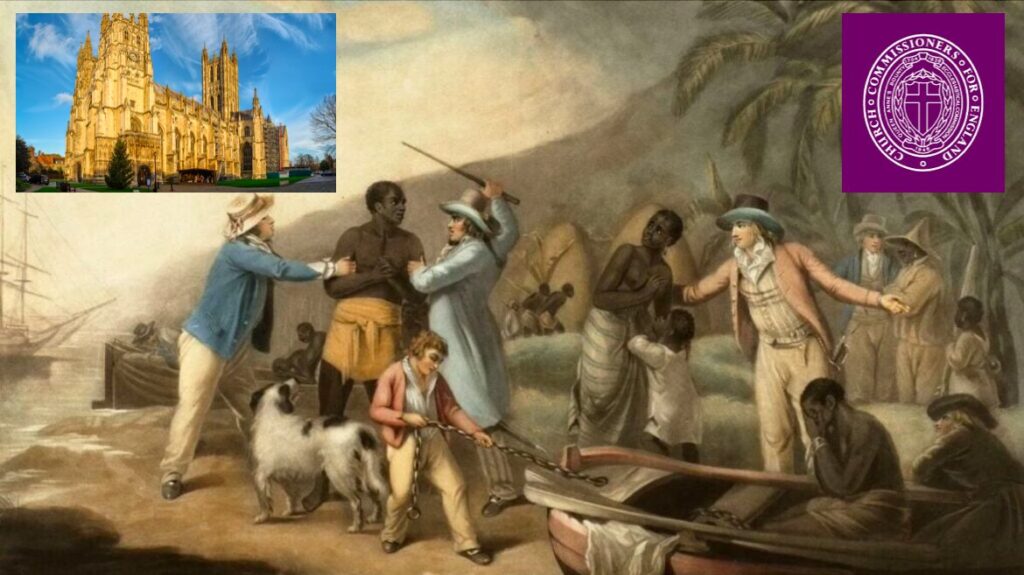
 Buy me a Coffee
Buy me a Coffee



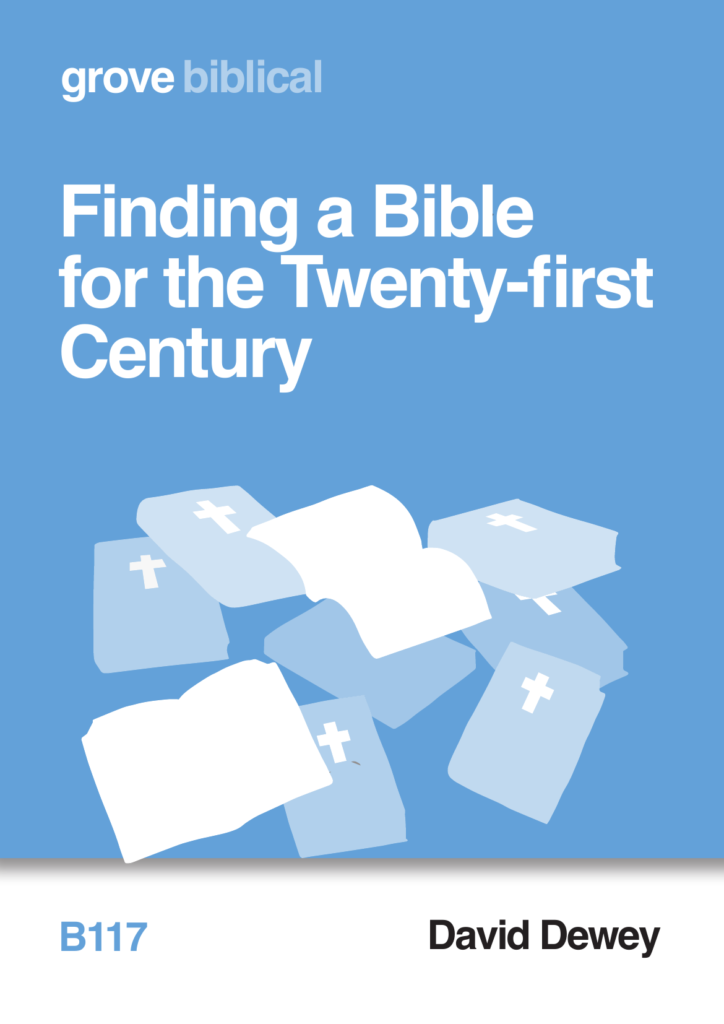








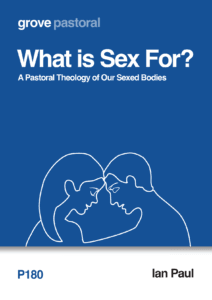

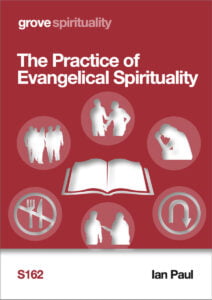
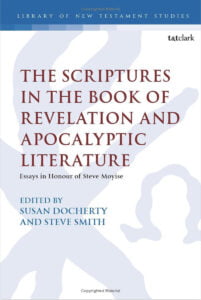
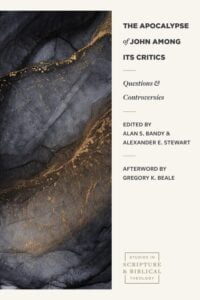
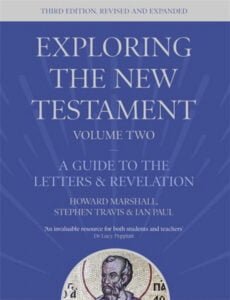
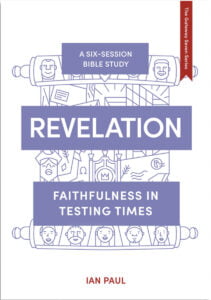
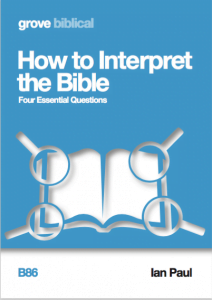
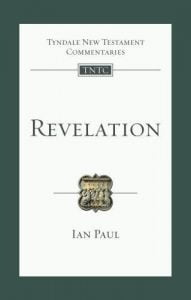
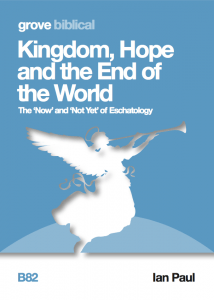
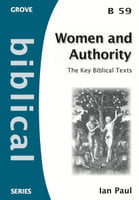
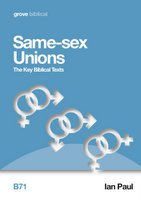

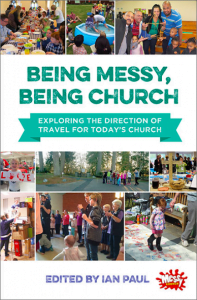
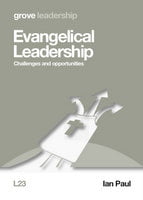
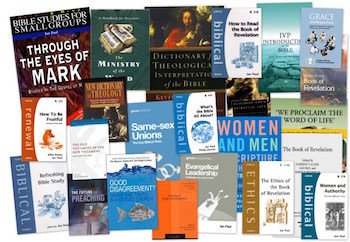
Excellent article.
I’d add two observations:
1) Queen Anne’s Bounty divested itself of the South Sea annuities in the early 19th century once it became possible to hold government debt directly. That further confirms that holding government debt/bonds, which gives a very predictable income stream, was the motivation of the commissioners.
2) It’s puzzling that none of the proposed reparations funds are to be directed towards Colombia, Panama, Venezuela etc. . The slaves that the South Sea Company did transport went to Spanish America (hence “South Sea”) not British colonies in the Caribbean.
Adam, you are right—none of it adds up. And here’s another question: a lot of money was paid by slave-traders to Africans who enslaved those of other tribes. When are those who profited in this way going to repay their debt?
Perhaps the Africans who profited by selling fellow Africans as slaves are the ancestors of the middle class Africans who will now benefit from the C of E’s reparation.
Yes – and in addition in the case of certain countries corruption is a further issue meaning any bounty could be creamed off by the top echelon.
Good to see Robert Tombs writing here. He is more than his modest self-description above states: he is also the author of the definitive history of England for our generation (The English and their History) and a founder of the History Reclaimed project to combat woke inaccuracies in modern writing about history.
Why did the the industrial revolution begin in England? It combined seven ingredients: iron ore in the neighbourhood, a coal seam, limestone as a molten substrate for the reaction between the other two in a blast furnace, deep water (an arterial river such as the Severn, or coastal waters) for transport of these heavy materials and products, a banking system prepared to lend against good ideas, labour (available due to changes in agriculture such as improved crop rotation systems, and in some places to land enclosure), and know-how. These all came together in 1709 in Shropshire when Abraham Darby used, in place of charcoal in a blast furnace used to produce iron, coal that he had pre-heated. Pre-heating – in a confined space, so that the coal did not simply burn away – drove out impurities that ruined the strength of the iron produced if coal was used in blast furnaces. (The blast furnace was a mediaeval invention which blew air through the mix from the bottom, originally using water-powered bellows.)
After Darby’s innovation, blast furnaces could be greatly scaled up, because coal was much more readily available than charcoal, which had been obtained by letting wood smoulder under a blanket of soil. So began the first phase of the industrial revolution, a new iron age based on (‘king’) coal. The English were already advanced in the harnessing of energy from sources other than human muscles: from wind (windmills), water (waterwheels) and from beasts of burden. The icon of the new era was the iron bridge raised over the River Severn in 1779, while in 1797 the world’s first iron-framed building was opened in Ditherington, Shrewsbury, a flax mill; this was the prototype for all skyscrapers. The canal system was dug to move raw materials and products around inland. The (non-motile) steam engine was also developed; its control gear was derived from how clocks work, its cylinders from cannon-boring, and its boilers from brewing. Probably the facility of English social structure for throwing together people of diverse knowledge and viewpoints facilitated this combination; mass literacy, deriving originally from the desire of protestants to read the Bible after the invention of printing, was crucial, while acceptance of the Bible gave a morality that was crucial. (Imagine trying to start and run a company in a place where many people are corrupt and contract law is difficult to enforce; this, not sloth, is the main reason why wealth creation is more difficult in many places.)
The Reformation played a further role: Henry VIII’s dissolution of the monasteries in the 1530s had given English schooling an impetus, and the ‘Glorious Revolution’ of 1688 had legalised nonconformism but excluded nonconformists from the professions. Consequently these most energetic and diligent among England’s people channelled their talents into entrepreneurship and innovation. That explains their disproportionately large representation among industry’s pioneers.
After the steam engine had been invented, it was improved in a series of steps. It permitted the intelligently directed application of essentially unlimited power for the first time in human history. Priority applications were the pumping of water from deep mines, then mechanised factories in which power was dispersed from a central large steam engine via a complex of axles, pulleys, belts and gears. The textile industry in particular became mechanised, and the mill at Ditherington was the first to be powered by steam rather than by a waterwheel.
Not much to do with slavery…
The Commissioners who produced the 2023 report failed to unearth this:
An archbishop of Canterbury in the 18th century approved payments for the purchase of enslaved people for two sugar plantations in Barbados, documents seen by the Observer have revealed.
Thomas Secker agreed to reimburse a payment for £1,093 for the purchase of enslaved people on the Codrington Plantations, as well as hiring enslaved people from a third party. It was stated the measures were “calculated for the future lasting advantages of the estates”.
The papers are among a cache of documents found in the archives of Lambeth Palace Library which detail the direct links between the Church of England and chattel slavery on plantations owned by its missionary arm, The Society for the Propagation of the Gospel in Foreign Parts (SPG)…
The SPG was left the two sugar plantations in 1710 by the colonial administrator Christopher Codrington. His will stipulated that he wanted the plantations to be worked with 300 enslaved people and a college to be founded on the estate. It has been estimated the plantations generated £5m a year in today’s money.
The SPG was founded in 1701 by royal charter to convert people in the colonies and its governance meetings were regularly chaired by the incumbent archbishop of Canterbury. Successive archbishops of Canterbury were sworn in as SPG president throughout the period that enslaved persons worked on the plantations, from 1710 to 1838.
At meetings chaired by Secker in November 1758 and August 1760, payments were approved to reimburse accounts for the purchases of “new negroes”, as well as hired enslaved labour, according to the documents in the Lambeth Palace Library archive…
Enslaved people on the Barbados plantations owned by the Church of England’s missionary arm were branded with irons and forced to work “under the whip”. A document listing those on the plantations in 1781 revealed 73 children among the enslaved people.
The Church of England apologised in 2006 for “its involvement in the slave trade” and operation of the Codrington Plantations but has not previously acknowledged the role of an archbishop of Canterbury in approving funds for the purchase of enslaved Africans.
https://www.theguardian.com/world/article/2024/may/25/revealed-how-church-of-englands-ties-to-chattel-slavery-went-to-top-of-hierarchy/
Aren’t Archbishops wonderful?
In the vanguard, or early adopters of cultural methodologies of progressivism?
But Justin’s response is so strange. Why should he feel any responsibility for the actions of a long-distant predecessor? Does he believe in generational guilt?
I suspect my great-grandfather was often mean to people. What does that have to do with me?
What if your father committed fraud against a family which thereby impoverished them and significantly enriched you? I suggest that when you inherit, you owe them something. I believe this moral debt tails off with time and number of generations, or else we would still be grumbling at the northern French for 1066, etc; but how to decide? THIS is the question that I have yet to see addressed by people of goodwill on both sides.
A key question here is the extent to which the wealth of the CofE is rooted in the slave trade. Parts of the UK, e.g. the ports of Liverpool and Bristol, clearly benefitted from the trade circulating the Atlantic, although one would need to track the development of these ports over time to see the proportion of their wealth which came from that period. Individuals and their families also benefitted. This is the case for the person who is likely to cease being my MP next week. Even in these cases it is hard to make a judgement 200 years after the problematic events.
The case against the southern states of the USA is rather stronger. The economy of these places was based significantly on slave labour, particularly for ‘king cotton’.
Perhaps to follow your analogy, the question here is what might you owe to your relatives. One measure, thinking of restorative justice, would be to put things back to what they would have been if the fraud had not been committed. If the transatlantic slave trade had not taken place, what would be the current circumstances of the descendants of those plucked against their will from West Africa, compared with their current circumstances in the places to which their ancestors were taken?
The honest answer to your final question is that they would have probably been at least as badly off as the slaves of other Africans. The Benin kings slaughtered and tortured their slaves by the tens of thousands.
Notice how the pedantic expression ‘enslaved people’ has systematically been substituted for ‘slaves’. I suppose it is intended to tell us that slaves were people, but who in modern times has doubted this? Does everything today have to infantilised?
Is it even correct? I would argue that ‘enslaved people’ applies only to those who were captured and made slaves of others. Yet many slaves were born into captivity.
I understand this practice has been extended to the most recent versions of the Cambridge Latin Course where ‘servus’ is now translated ‘enslaved person’.
I hope more people understand how they became slaves, sorry, enslaved people, in the first place, through the actions of local rulers. If there is any case for reparations after 300 years (and there isn’t), the descendants of the local aristocracies of West Africa should pay up. Which is absurd.
A couple of years ago I taught a class about John Newton. I called up an American Christian youtube cartoon to show them and was appalled to see it depicted English slavers going into the African bush and throwing nets over peaceful folk in villages. Utter nonsense, of course, but a reminder that modern education isn’t about the truth.
Perhaps the use of a phrase such as ‘enslaved people’, rather than being a pedantic innovation, helps us to remember the processes of enslavement and the primary agents of it: the African rulers who captured them initially, the traders who bought them and transported them to the Americas and those then who bought them and put them to work in their service. All three groups were at fault and none of the enslavement was the result of the slaves own choices or actions, nor was it if they were born to enslaved parents. They were done to by others. So I, for one, find the phrase ‘enslaved people’ a helpful reminder and not at all a PC or ‘woke’ innovation.
And as a footnote, when the USA was forming it’s constitution the southern slave-holding states could count each slave as three fifths of a person (!) towards their total population count when allocating seats proportionally in the House of Representatives. So enslaved people were counted in to give the southern states an advantage, but of course, never regarded as people and not given any rights, and certainly not the vote. When we’re assessing the realities of slavery and it’s legacy it’s such attitudes that we do well to bear in mind using our historical imaginations. So I think it’s helpful to be reminded that someone who was a slave was a person who was then enslaved by others. As Wedgwood expressed it so well, “Am I not a man and a brother?” If you don’t find it helpful, that’s fine, but I don’t feel infantilised by it.
Tim: I repeat that an enslaved person should refer, correctly, to one who was captured, yet the slaves in the Deep South before the US Civil War had all been born into captivity because the Royal Navy had long since eradicated the transatlantic slave trade via its West Africa Squadron.
Frederick Douglass was a slave from there who managed to get free and who realised the importance of forgiveness – for one’s own sake, not for the sake of those you have wanted to take revenge on, because bitterness eats the soul. He toured Britain and Ireland and commented favourably on the lack of racism here compared to the USA.
Perhaps we should now call kings ‘kingly people’ or soldiers ‘fighting people’ or…
What should we call bishops?
Bi-shop(per)s, except when it comes to sexual and scriptural and theological determinants, when it is Multishops.
Anton,
You may have misunderstood my point. I’m suggesting that the use of the language of ‘enslaved people’ may be helpful in reminding us of the personhood of the slaves, whether they were captured in Africa and then transported, or born into a family that was already enslaved. The phrase can perfectly correctly be used of both. You appear (but I may have got this wrong) to be categorically asserting that ‘enslaved people’ objectively only refers to those taken into slavery. That may be your opinion and you may find it helpful to use it in that way but it can’t be a watertight definition that means that other people can’t use language differently.
Yes, you are right on this. But I don’t think there is any evidence that people who use the term ‘slaves’ think of them as less than human.
The standard Greek term in the Roman Empire was ‘bodies’, which is demeaning, and which the NT contradicts.
Ian: Are you sure that this is the literal meaning of ‘doulos’?
No…. but if they were Christians they could never have committed these crimes. Pagans pretending are not convincing…Cressida
Why would you trust accountants on historical matters? Very odd.
And HOW ON EARTH does this sense of guilt over past acts of white superiority and domination square with the current domineering, neo-colonialist attitude of the Church of England towards the 75% of the Anglican church around the world regarding marriage and sexual activity?
Neo-colonialist? What are you talking about?
Here’s an example. When I was debating in the Oxford Union with three liberal bishops, I commented that I supposed it was time for us once again to go to Africa and enlighten them about sexuality and same-sex relations. One of the bishops—a diocesan—replied ‘Yes, we should—we are far more advanced than they are!’ The comment is in the public domain and on YouTube.
I thought you were adamant that we should criticise the Church of Uganda for what they’ve been up to. Have you changed your mind?
I am happy to reject any wrong actions by another. I am not happy saying ‘We are superior to Africans because we are enlightened’ which is what the bishop said.
That can only be John Inge of Worcester, as the other two bishops (Buckingham, Dudley) were suffragan – although I’ve no idea where an exchange rather than a speech might be found in the evening’s proceedings on YouTube.
White unbiblical English archbishops lecturing black biblical Nigerian ones.
We also lecture Africans on how they must continue to cook indoors using biofuels (often dung) and suffer health problems from the smoke, because it is very naughty to use fossil fuels as we do. They call this Green Colonialism.
That, James, is a very good question…!
A previous and relatively unpleasant set of exchanges on this topic took place very recently.
One particularly trenchant commentator insisted on drawing comparisons between the English and the Nazis. (He used an intellectually risible argument based on a Wikipedia derived knowledge of the law – it remains the case he was insinuating the English should be categorised alongside the Nazis).
Now we discover the entire “reparations” nonsense is built on pure fiction.
People on this blog categorised Farage with Hitler in the thread that started just seven days ago.
Those who comment are not ‘people on this blog’!
Well I’m not on any other blog while I’m typing this!
Happy to amend to:
“People commenting on this blog categorised Farage with Hitler in the thread that started just seven days ago.”
I’d love to know the outcome of that discussion.
Perhaps, you could provide a link to the commentator’s Nazi categorisation of English people.
But legally the Church Commissioners are answerable to Parliament not to us (the church) anyway. So let’s ask Parliament to let us have whatever percent of the money it’s willing to give us. Parliament can then spend as much of what it keeps for itself on “reparations” as it wants. And we can spend our bit on what we want.
Oops! I feel a disestablishment coming on.
But legally the Church Commissioners are answerable to Parliament not to us’
I am not entirely sure that is true.
How far should one go back in assessing the amount and disposition of reparations? Well, it’s a chicken and egg thing. If various human-rights-violating activities, touching on the lives of my ancestors, had not taken place (slightly earlier than those discussed above), I wouldn’t have been born. The discipline of population ethics discusses this casuistical idea under the name of the non-identity problem.
I don’t think I understand your comment here.
ORIGINAL SIN
One reason why people who profess a faith act as if the failure of previous generations is their responsibility is because of the popularity of the doctrine of original sin – which while usually associated only with our being inclined towards sin due to Adam’s sin – also has adherents who believe we inherit Adam’s guilt.
The idea that we inherit Adam’s guilt is refuted by Ezekiel 18:20:
ESV The soul who sins shall die. The son shall not suffer for the iniquity of the father, nor the father suffer for the iniquity of the son. The righteousness of the righteous shall be upon himself, and the wickedness of the wicked shall be upon himself.
Why – if a child can never inherit the guilt of one’s father – would anyone be guilty – or BECOME guilty – as a result of being Adam’s descendant?
As for the other element – that we are born inclined towards sin from birth due to being descendants of Adam – Deuteronomy 1:39 and Isaiah 7:16 each show that children do not know right from wrong – which means that original sin only survives those verses if sin is about the act and not about the state of mind and heart when committing the act. Imagine that this was the case – it would mean that we must believe that Jesus is as angry with the boy who gave him his lunch as he was with the Pharisees he called a brood of vipers. Which is nonsense – original sin is not correct doctrine.
INHERITING THE GUILT OF PREVIOUS GENERATIONS
But even without original sin – do we share in the guilt of previous generations? I just showed from Ezekiel 18:20 that the answer is no – however there is an exception. We are guilty for the sin of previous generations if we continue to operate now in a way that reflects acceptance for that sin. In Luke 11:46-47 Jesus says to the lawyers that they have not turned from the misbehaviour of their fathers – and are therefore subject to the judgement on them.
ESV
And he said, “Woe to you lawyers also! For you load people with burdens hard to bear, and you yourselves do not touch the burdens with one of your fingers. Woe to you! For you build the tombs of the prophets whom your fathers killed.
Which leads to the question – do the leaders of the Church of England behave as if they have separated themselves – not specifically from slavery – but from the ATTITUDE of treating some groups of people as being of less than full human value? And the answer – regrettably – is no. It is everyday behaviour for the Church of England to treat people who are well connected – educated in public schools – and who have attended Oxford and Cambridge – as of greater importance – and as those chosen from birth to be the senior leaders of the church. With everyone else appointed from birth to be their followers. This attitude is not specific to either those who call themselves evangelicals – or to liberals – it’s common to both – however I would suggest that it is more prevalent among those who CLAIM to be evangelicals.
GOD’S JUDGEMENT IS CURRENTLY ON ALL OF THE CHURCH OF ENGLAND
The only people who have separated from this favouritism are those who have left the Church of England. How can I say that with such certainty? Because everyone who has stayed is acting as if it is acceptable to respond to decades of misbehaviour by archbishops and bishops EVEN NOW with negotiation – when if such behaviour had been committed by members of individual C of E churches there is NO WAY that those people would have been given decades to continue in their wrongdoing.
(Imagine what would happen if a member of the congregation at St Helens, or All Souls, and HTB only NOW – taught that we should bless same sex relationships – they would be held accountable – and within minutes, hours, or days – not within years or decades).
Philip B With reference to the 4 texts you have employed to make your case re original sin, you have made little or no attempt (especially in relation to the first 3) to set them in their historical and theological contexts!
[Ezekiel 18:20] – This refers to Ezekiel’s contemporaries complaining that they were being punished for the sins of the previous generation. The divine response to this avoidance of responsibility is that each individual is responsible for his/her own sins.
[Deuteronomy 1:39]- This is a declaration by Moses that the first generation (including Moses [Deut. 1:37 ]) shall not enter the promised land because of their habitual unbelief and disobedience; but the next generation will!
[Isaiah 7: 16] – Compare with verse 14: This refers to the birth of Immanuel ; a clear reference to Jesus Christ (Matthew 1:23! How does this relate to original sin?
[Luke 11:46 – 47] – The context here ? Jesus is declaring that current generation of lawyers are guilty of , at best, double standards. On the one hand they laud the actions of their forefathers while it was they (the forefathers)who killed the prophets [48]. Yet, at the same time, they “honoured their memory” by erecting tombs ! Jesus warns them that “they will be held responsible for the blood of all the prophets”. This is not a double portion of the effects of original sin. At this time of crisis in Israel’s history their leaders had to break with a distorted view of the past by experiencing a thoroughgoing repentance or as one biblical scholar has said they would ” pay the penalty for the accumulated guilt of precious generations.”
Yes , they did share in ‘ the guilt of previous generations. However in this text as the others, you have made no mention of how the figure of Adam enters the scene! Why did you not make mention of Romans 5: 12 -13 :”Therefore, just as sin entered the world through one man, and death through sin, and in this way death came to all men, because all sinned – ?”. And why ignore 1 Corinthians 15 : 20f ? “For since death
came through a man, the resurrection of the dead comes through a man. For as in Adam, all die, in Christ shall all be made alive.”
I leave you to peruse these texts. Perhaps as an aside, it might encourage you think out side your own theological “box” which you seem to inhabit to realize that the C of E is still inhabited by many faithful people, many of whom exist outside the hallowed portals of the London Bible Belt. Your final paragraph paints a picture of someone who, whilst having misgivings about “original sin ” (without further reflection on the subject), needs to give serious thought to other more pertinent topics – beginning with Matthew7:1.
Hi Colin,
I can’t follow your reasoning at any point.
I don’t understand why if you chose to give wider context to the verses I quoted why you didn’t point out in what way the extra information proved any misuse of the verses.
I don’t understand why if you disagreed with me on my reasoning in relation to original sin you didn’t indicate whether or not you believe in the doctrine – and if you do – why you didn’t seek to ESTABLISH it from scripture. (Establishing a doctrine involves proving that the interpretation you reach of a particular verse or passage is the ONLY viable one. You not only didn’t do that – you presented verses which don’t even have your conclusion as a POSSIBLE interpretation. How is it possible for you to conclude that Romans 5:12 is about sin spreading through people being born as descendants of Adam when the verse says otherwise – that the reason why people all came to sin was because of the presence of other people who were sinners?)
I don’t understand why you concluded that Luke 11:46-48 is about the lawyers having double standards when verse 47 starts with the words “Woe to you” and when verse 48 reveals what Jesus has concluded about the behaviour outlined in verse 47 (their intention in building the tombs for the prophets). And I don’t understand why you bothered to mention your disagreement with me about what the lawyers had done wrong – when you ended up agreeing with me that “their leaders had to break with a distorted view of the past by experiencing a thoroughgoing repentance or as one biblical scholar has said they would ” pay the penalty for the accumulated guilt of precious generations.”” I agree! It is only when we break away from the sin of our ancestors that we do not share in their guilt.
I don’t understand why you quote a passage like 1 Corinthians 15:20-21 which only reads COMPATIBLY with original sin (a point that is only relevant if original sin has been ESTABLISHED elsewhere in scripture). These verses read just as compatibly with the most common alternative view to original sin – the belief that each human being rebelled against God in the same circumstances as Adam and Eve (free but subject to temptation) with the same kind of sin (free, knowing, and wilful sin).
I don’t understand why you think it’s wrong for me to conclude that anyone who hasn’t obeyed the following bible passages after DECADES of wrong behaviour by archbishops and bishops is unfaithful. Romans 16:17 and 2 John 1:10-11. (With the exception of those who have reason to be ignorant – such as recent converts).
I therefore also don’t understand don’t why you believe that I am ‘judging’ people in a negative sense – when it isn’t wrong to reach conclusions about what people have chosen or not chosen to do – and how their actions compare with scripture.
I don’t understand why if I was making an argument that the Church of England as a whole has been showing favouritism (in continuing to accept its current leadership) that you disagreed with that conclusion without explaining why.
I looked you up – I see that you are a vicar/senior pastor in the Church of England. In as much as you obey God by separating from primary misbehaviour – I wish you – your family (whether nuclear or extended) – and your church congregation – God’s blessing.
Per Philip and Colin H
Philip I “widened” the argument because none of your conclusions are directly related to the issue of *Original” Sin i.e. the sin of *Adam*; moreover the concept is something which is alien to biblical Judaism! Hence one reason for my questioning the use of OT quotes . That is why, I would suggest on the one hand, that you study the *NT* teaching on this, and why on the other hand , that simply trawling through OT texts in order clear evidence for or against the veracity of Original Sin is a misuse of the OT. As Colin H has warned, what he describes as the NIV’s desire to “steer us in an OS direction”.
But for me that raises the more significant question: not of employing the OT to rebut a particular doctrine whose interpretation is largely based upon the NT and its interpretation, while treating the OT primarily as a conduit for the New! NIV could be seen to be complicit in Romans 3:21( including an indefinite article turning “righteousness” into *a* righteousness). This could be seen to fit in with the tendency in “Replacement” circles to interpret (Bowdlerise?) certain OT passages in order to make them conform to patterns which in NT terms are deemed to be following the right “spiritual” path.
As to my understanding see[Romans 5: 12] and I Corinthians 15:23: (a)Representation – Adam is a representative of the old (fallen) humanity. Thus sin, and judgement are traced back to Adam, ; justification, forgiveness and redemption are traced to Christ. “In Adam, relates to the prison of sin: “in Christ” relates to the glorious liberty we have in Christ. (b) Source [1 Corinthians 15: 21] says “For since death came *through *a man (Adam), the resurrection of the dead comes also *through* a man (Christ). The inclusion of the conjunction “through”, (“by” in the KJV) in the citation demands some acknowledgement of an organic relation between Adam and fallen humanity. Calvin employs the term ‘root’ for the sin of Adam : each part of the tree down to the roots is one unit. However, (and here comes the crunch line) while Adam’s guilt is imputed to us, we do not (I believe) inherit his *guilt*.
I suspect that one of the problems here is that there are those for whom the idea of ‘Adam’ as being in any sense historical is fanciful. I for one would reject this approach. However, as with the rest of Genesis 1-11 a contextual interpretation should allow for, among other things the type(s) of literature we are dealing with. This I accept. History is “a many splendoured thing. But I cannot accept the proposition that we are dealing with the juxtaposition of figure of fiction and an historical Saviour .
Philip, your belief that the key issue in this particular blog (concerning, what I believe like others to be a totally false sense of guilt) ,is related as you say to ” the popularity of the doctrine of original sin”. Given the congregations whose names you referred to at a later stage would indicate, I suggest, that your spiritual watering holes are to be found in the higher echelons of evangelicals . The C of of E is much more expansive than that. O.S. is not a buzz word in contemporary worship circles.
You said in your article “God’s judgement is “currently on *all* of the Church of England”. Really! And then you wonder why I reacted as I did? You have done some research on my background . So therefore I must be under judgement. Indeed, could it even be the case that I must bear along with others the “guilt” for all of the wheeling and dealing of the hierarchy? You’ll forgive me if I see a propensity here for double think!
In any case, sorry, but your final paragraph is completely out of date. I am no longer in full-time ministry. In fact, I am no longer a member of the Church of England! Woe is me! Perhaps this is not a sound basis for *not* feeling a sense of guilt.
Hi Colin,
I think Philip is correct about this. There is a growing consensus across biblical scholarship that the concepts contained within the ‘Original Sin’ teaching have little basis in Scripture. It is difficult to see how the Hebrew Bible could be clearer:
‘Fathers shall not be put to death because of their children, nor shall children be put to death because of their fathers. Each one shall be put to death for his own sin.’ (Deuteronomy 24:16)
‘But he did not put to death the children of the murderers, according to what is written in the Book of the Law of Moses, where the LORD commanded, “Fathers shall not be put to death because of their children, nor shall children be put to death because of their fathers. But each one shall die for his own sin.”’ 2 Kings 14:6
However, Numbers 14:18 makes it clear that the impact of the sin of previous generations is felt in subsequent generations:
‘The LORD is slow to anger and abounding in steadfast love, forgiving iniquity and transgression, but he will by no means clear the guilty, visiting the iniquity of the fathers on the children, to the third and the fourth generation.’
—but see how NIV tries to steer us to an Original Sin understanding in its translation (Numbers 14:18, NIV).
Historically it is clear that the church adopted a Graeco-Roman understanding promulgated and summarised by Augustine.
And Paul’s letter to the Romans? One of the leading scholars in the world on Romans, Douglas Moo, describes himself as a Reformed believer—and demolishes the concept of Original Sin in his 1,000-page 2018 commentary.
There is s biblical distinction between being put to death and death pronounced by God, a curse, which affects everyone as a result of Adam’s sin. We are all, in Adam in that respect. Not all of us are in union with Christ, a new eternal resurrection, newlife, born again from above in Christ, the Second Adam, the sinless bearer and breaker of the curse.
But again, many of us who comment here ride in on our hobby horses, which are at core tangential to the main article.
In summary, Numbers 14:18 points out how the actions of previous generations can impact subsequent generations—and while it does not suggest guilt is transmitted—it does not negate a compassionate response.
But I agree with what seems to be the tenor of the blog—that there are huge practical difficulties, and various implications for this.
These posts provide an invaluable service in informing us of the actual historical reality.
Now the rub: has ANYONE in the Church Commissioners or responsible for national finance or investment actually read these posts and responded to them?
Will ANYONE bring this up at General Synod and demand a clear answer?
We remember too clearly and too painfully the awful debacle caused by the kneejerk ‘safeguarding’ response to false or unfounded allegations made against the memory of Bishop George Bell, which took years of campaigning and great expense to get a semblance of justice. It will be immensely damaging if vast amounts of church money is squandered in reacting to the current cause du jour which has equally very little basis in historical fact but lots of headline-grabbing indignation.
We have your back, Ian!
I will not accept responsibility for the sins of the past.
In New Zealand, adoption of British sovereignty led almost immediately to release of the considerable number of slaves held by Maori tribes.
Yes—it is very odd that people pass over this…
Bruce Moon – I don’t know if you have any connection to the eminent Auckland historian Professor Paul Moon ONZ, but you may know that in 2008 he brought out his study ‘This Horrid Practice’ (a phrase from James Cook’s journal in 1770) on Maori cannibalism. Everyone who was educated in New Zealand c. 2000 knows that prior to the colonial days (1840, Treaty of Waitangi), cannibalism, slavery and intertribal warfare were endemic for centuries among Maori and among Polynesian peoples generally.
Sensitivities about the past and political posturing have led to a concealing of these facts from school and university curricula, while a new “narrative” of colonial oppression has been composed. The spirit of uncritical Rousseauism lives on.
Slavery and cannibalism, as well as the ‘Musket Wars’, were ended in New Zealand by the missionaries of the Church Missionary Society – aided by many Maori catechists – and the British colonial government.
Paul Moon and I are not related – this side of Adam and Eve anyway. We spar occasionally.
I m a scientist by trade – Fellow of the Institute of Physics, UK – for example.
Some scientific background is sometmes helpfull in discussing these matters!
Paul Moon and I are not related – this side of Adam and Eve anyway. We spar occasionally.
I m a scientist by trade – Fellow of the Institute of Physics, UK – for example.
Some scientific background is sometmes helpfull in discussing these matters!
Six degrees of separation and all that. Barack Obama is an eighth-cousin of Dick Cheney and an eleventh-cousin of George W. Bush.
New Zealand’s history is very interesting in this debate because, as you note, it was the colonial power that actually ended indigenous slavery – just as David Livingstone laboured to do the same in Africa. Every schoolchild in Britain used to know this 60 years ago, but waves of immigration from the Caribbean and Africa have made this fact too sensitive to mention in British schools. That is why ‘black history’ in British schools obsesses about the US and the Montgomery bus boycott, a subject of no relevance at all to Britain. Indians and Pakistanis, who make up the vast majority of ethnic minorities in UK schools, are largely ignored in the syllabus.
In New Zealand the proportional representation system has allowed a racially demagogic party Te Pati Maori to send a contingent of exhibitionists to Parliament where they regularly try to interrupt proceedings with theatrical performances. Their fundamental theme is grievance and blame, according to which Maoris once lived in a socialist egalitarian utopia until the colonialists arrived. These activists are long on rhetoric and short on fact, especially the historical kind. All the archaeological evidence (from skeletons and excavations) shows that the lifespan of pre-colonial Maoris was short, traumatic injuries were common, and general nutrition was poor. It was no paradise of the South Seas.
“What have the British ever done for us?”
This is a helpful analysis of the financial and economic issues. But further thought needs to be given to the comment in the introduction: “There is no indication as to how the beneficiaries the proposed funds are assessed to be suffering from injustices caused by slavery”. Let me try. The books by the Guyanese-born psychotherapist Barbara Fletchman Smith (‘Transcending the Legacies of Slavery’ & ‘Mental Slavery’) depict the transgenerational damage of enslavement, notably in sexual and parental relationships, and the more elusive issue of self-image. (See the superb poem in the introduction to Joyce Gladwell’s ‘Brown Face, Big Master’). More broadly Orlando Patterson’s ‘The Sociology of Slavery’ underlined the fact that the societies of the British Caribbean were artificial creations intended for nothing more than making profit through slave labour.Therefore there is a moral case for saying that the United Kingdom (not the Church of England as such) has a responsibility rather similar to an errant father’s maintenance payments to demonstrate reparative care for the economically stunted and psychologically scarred societies that we formed, and whose descendants today in some measure still bear the legacy.